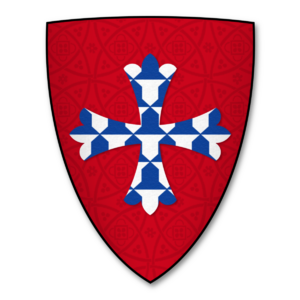William de Forz, 3rd Earl of Albemarle facts for kids
William de Forz, 3rd Earl of Albemarle (born around 1190 – died 26 March 1242) was an important English lord. He was known for being a powerful but sometimes difficult figure during a time of change in England.
Contents
Family and Background
William de Forz was the son of William de Forz (who died in 1195) and Hawise, Countess of Aumale (who died in 1214). His mother was the daughter of William le Gros, the first Earl of Albemarle. William's father was a lesser lord from a village called Fors in France. The family name, Forz, came from this village.
His Lands and Power
Around 1213, King John gave William control over the lands of the Earldom of Albemarle. By 1215, he officially received all the lands his mother had owned. The Earldom of Albemarle was a large area of land. It included a big estate in Yorkshire, especially the area called Holderness with Skipsea Castle. It also included the important area of Craven, plus lands in Lincolnshire and other places.
However, the French king had recently taken the county of Aumale, which was also part of the earldom. This meant that William was the first Earl of Albemarle to see his lands as fully part of England, not France.
Fighting for Kings and Barons
William de Forz was very involved in the fights between the English lords (called barons) and the kings, King John and later King Henry III.
Loyalty to King John
During a big rebellion by the barons, William mostly supported King John. However, he did join the rebels when it seemed King John would lose.
William was one of the twenty-five lords chosen to make sure King John followed the Magna Carta. This was a very important document that limited the king's power. But William was probably the least against the king among these lords. The barons made him the leader of Scarborough Castle. Soon after, when fighting started again, he switched sides and joined King John. He was the only one of the twenty-five lords to do this. He fought for the king until the French captured Winchester in 1216. When the king's side looked hopeless again, William joined the barons. He often changed sides if it helped him.
Supporting King Henry III
After King John died, William supported the new king, Henry III. He fought in important battles like the siege of Mountsorrel and the Battle of Lincoln.
William's main goal was to make the powerful lords more independent. He worked with other foreign lords, like Falkes de Breauté, who King John had brought to England. This led him into conflict with Hubert de Burgh, who was a very powerful official and basically ruled England for the young King Henry III.
In 1219, William was declared a rebel and was excommunicated. This meant he was officially removed from the church community. This happened because he supported a forbidden tournament. In 1220, things got worse when he refused to give up two royal castles, Rockingham and Sauvey. King Henry III marched against these castles himself. William's soldiers ran away, and the castles were taken without a fight.
Losing Power
In 1221, William rebelled again. He was excommunicated once more by a church leader named Pandulf Verraccio. The whole kingdom was called to fight against him. A special tax was even raised for this purpose. When his castle of Bytham was captured, his power was broken. He sought safety in a church. With help from Pandulf, he was pardoned. He was supposed to go to the Holy Land for six years, but he stayed in England.
In 1223, he rebelled again with Falkes de Breauté and other lords who caused trouble. They made peace again. But it wasn't until Falkes de Breauté lost his power that William finally settled down as a loyal English lord. He eventually gave up his rebellions in 1224 and remained loyal to Henry III from then on.
Later Life and Influence
In 1225, William was present when King Henry re-issued the Great Charter for the third time. In 1227, he went to Antwerp as an English ambassador. In 1230, he went with King Henry on a trip to Brittany. In 1241, he started a journey to the Holy Land, but he died at sea on 26 March 1242, on his way there.
Family
William had a wife named Aveline de Montfichet. They had a son, William de Forz, 4th Earl of Albemarle, who became the next Earl.
| Peerage of England | ||
|---|---|---|
| Preceded by William de Forz jure uxoris |
Earl of Albemarle 1214–1241 |
Succeeded by William de Forz |


